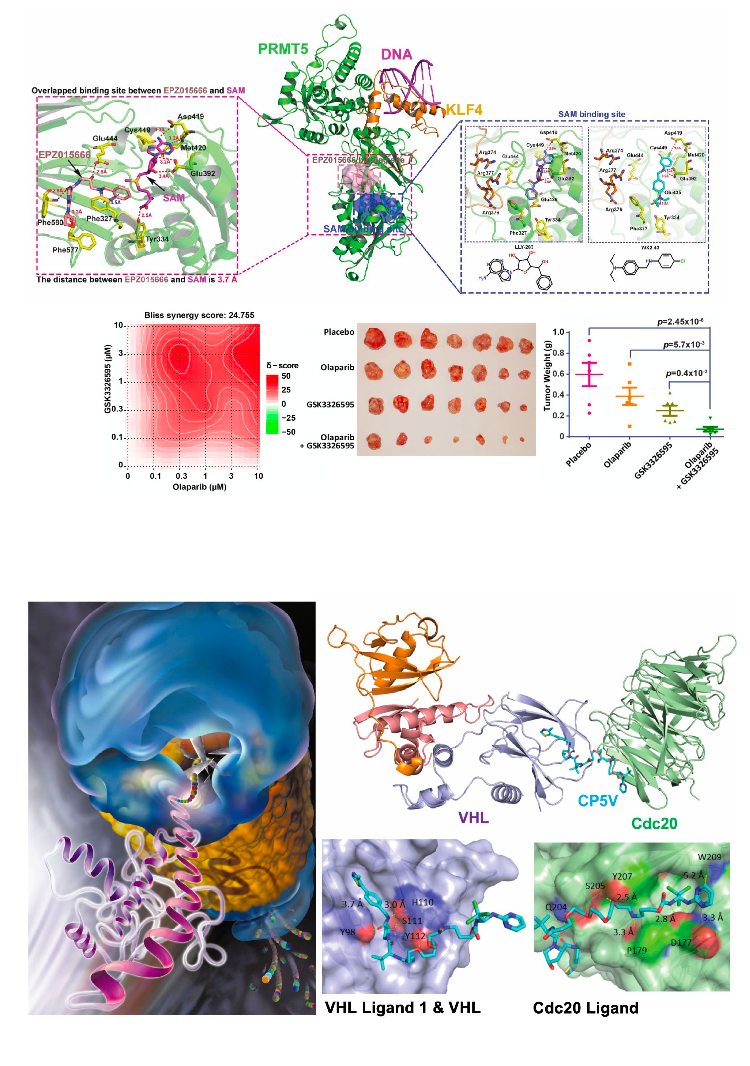
We have demonstrated the oncogenic role for KLF4 in breast carcinogenesis through regulating estrogen receptor signaling and genome stability. We have further elucidated the mechanism by which KLF4 protein stability is regulated by both VHL-mediated ubiquitylation and PRMT5- facilitated protein methylation. While VHL-VBC E3 ligase targets KLF4 for degradation, PRMT5 stabilizes KLF4 through antagonizing KLF4 ubiquitylation. Unexpected accumulation of KLF4 and PRMT5 protein are correlated with breast cancer prognosis. We thus developed small molecule inhibitor that blocks KLF4 protein methylation. In collaboration with GlaxoSmithKline Pharmaceutical Company and Northwestern Memorial Hospital, we recently opened a clinical trial that determine the synergistic effect of PRMT5 inhibitor in combing with PARP inhibitor in triple negative breast cancer treatment.
PROTACs (PROteolysis TArgeting Chimeras) has recently proved its extraordinary therapeutic potential through exceptional success on degrading estrogen and androgen receptors in cancer therapeutic. We recently utilize the PROTAC platform to develop degraders that destruct some difficult targets inhibited by the traditional inhibitor. For instance, we developed a novel chimera molecule to circumvent the challenges met by current Cdc20 small molecule inhibitors. We used Apcin-A as the warhead to target Cdc20. Regarding E3 ligase recruited for Cdc20 ubiquitylation, we have considered VHL/VBC and CRBN (Celebron), both of which have reliable binding moiety and have been applied in the design of several PROTAC molecules. To search for an optimal chemical linker maximizing the chance to form stable Cdc20-PROTAC-VHL/VBC ternary complex, we have designed and tested a series of linkers with different lengths, such as PEG2, PEG3, PEG4, PEG5, PEG6, PEG7, and PEG9. We identify a proteolysis targeting chimera, called CP5V, which comprises the Cdc20 ligand and VHL binding moiety bridged by linker PEG5 that induces Cdc20 for degradation. We now validate the impact of CP5V using various breast cancer animal models.

